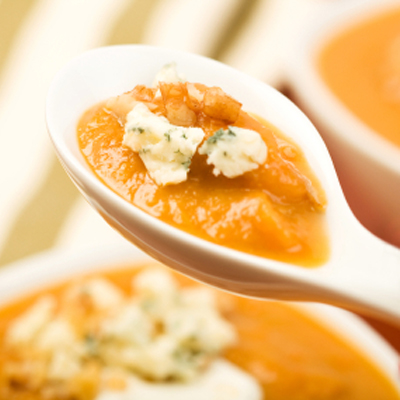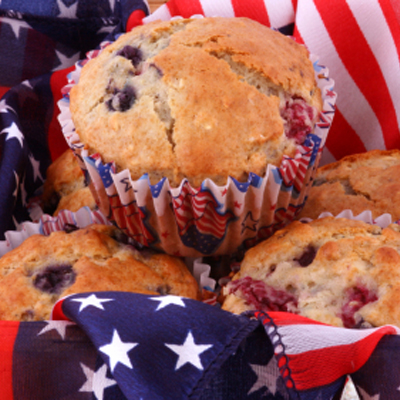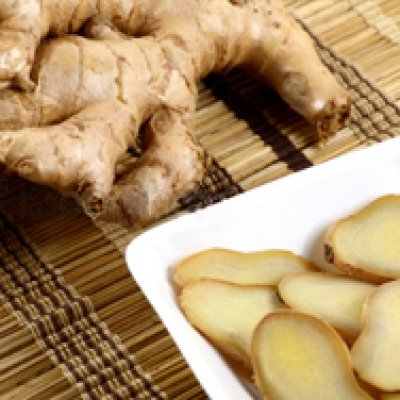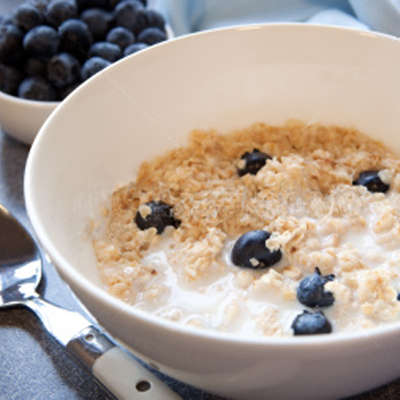10 Superfoods For Kids
Kids' diets can be a little hit or miss, to say the least. But, by adding more superfoods, you can maximize the vitamins, minerals, fiber, and healthy fats your kids eat at each meal or snack. To inspire you, we've highlighted 10 foods that pack a nutritional punch. Plus, family-friendly recipes will help you get these superfoods on the table quickly, easily, and deliciously.
Berries are nutritional powerhouses, and, unlike some of the foods on this list, they're usually an easy sell. Brimming with vitamins and antioxidants, berries also help to meet kids' fiber quota, and many children in the United States are not getting enough. If berries aren't in season, try using the frozen variety in oatmeal or smoothies. Freeze-dried varieties are perfect for snacks or simple desserts. 2.Fish and Seafood Fish is a great source of DHA, an omega-3 fatty acid beneficial in brain development. If your child isn't crazy about fresh wild salmon or tuna, try the canned variety or shrimp for a milder flavor and softer texture. Bake fish into casseroles or use it in a pasta salad if your little one enjoys mixed dishes. Don't shy away from breaded fish fingers, either. The crunchy coating is often enticing enough to help kids enjoy the fish and all the goodness it has to offer. 3.Seeds Sunflower, hemp, flax, and chia seeds all help kids meet their need for good fats, magnesium, protein, and fiber. Pack seeds for snacks, sprinkle on soups or salads, use them in baking, or add them to smoothies. Remember that flax seeds need grinding to be digested and that all seeds are best stored in the fridge to prevent spoilage. The exception is chia seeds, which can be stored in the cupboard and used whole. 4.Leafy Greens We've all heard about the nutritional superiority of greens. They're rich in iron, calcium, fiber, vitamin C, omega-3 fatty acids, and folate. But how can you help your little one enjoy the somewhat challenging flavor of spinach, cabbage, kale, and collard greens? The answer is: Start early and don't give up! Recent research shows that babies who are introduced to vegetables in their simple forms early on are more likely to eat even unfamiliar vegetables later. Be patient -- some children need to see a food dozens of times before mustering up the courage to try it. Also, don't feel like you have to eat the trendiest greens (we're looking at you, kale). Just serve whichever leafy greens are easiest to prepare and that your family prefers. 5.Nuts and Nut Butters Peanut butter gets a bad rep sometimes, but it's a very nutritious child-friendly staple that deserves superfood status. It's inexpensive, easy to store, adored by millions of children, and each 2-tablespoon serving of provides almost half of a preschooler's protein needs, in addition to magnesium, B vitamins, and healthy fats. Feel free to explore almond, cashew, and walnut butters as well. They are equally, if not more, nutritious and perfect on a sandwich, in a smoothie, or added to your favorite muffin recipe. 6.Orange Vegetables and Fruit The good news about orange foods is that even if your child doesn't like sweet potatoes, pumpkin, squash, or carrots, sweet fruits like mangoes, persimmons, or cantaloupe can provide the same boost of vitamins A and C, potassium, and lycopene. But don't swear off orange veggies forever if your little one turns up his nose at them. Keep preparing brightly colored veggies often and in different ways to help your kids learn to like them. 7.Whole Grains From the more traditional, like brown rice and whole-wheat pasta, to the more exotic, like quinoa, buckwheat, and amaranth, whole grains are on the rise. And it's no surprise, given their ability to reduce risk for chronic disease in the future and boost nutrition now, even in the pickiest of eaters. If your kids are not used to the flavor and texture of whole-grain pasta or rice, start adding them to the traditional white refined varieties and increase the ratio slowly. A tip: Cook whole grains in big batches and store them in the freezer for a near-instant side dish or breakfast. 8.Thirst Quenchers Recent research suggests that more than half of American children are dehydrated. To help your child get enough water, harness the thirst-quenching superpowers of watermelon, melon, oranges, and cucumber. In addition to hydration, your child will get a healthy dose of fiber, vitamins, and minerals. If your little one is not a fan of the texture of raw fruit and veggies, blend them into smoothies or freeze them into healthy ice pops for a chilly treat. 9.Plain Yogurt Plain yogurt is a superhero of the dairy aisle. It's full of beneficial bacteria, protein, and calcium -- all the good stuff our kids need to keep their little bodies healthy. Don't feel compelled to buy a "kid-friendly" yogurt variety with added sugar or fruit puree. They're often more expensive and loaded with sugar, and will not help your child learn to appreciate the wholesome tanginess of plain. At home, add a little sugar, honey, or jam to plain yogurt to help your little one transition to a less sweet flavor. Then gradually decrease the amount of sweetener. 10.Oats Wholesome oats are sometimes overlooked in the mornings, especially when compared to neon-colored breakfast cereals. But oatmeal doesn't have to be boring. Help your children get the benefits of long-lasting energy, fiber, iron, and protein of this honest-to-goodness superfood by adding fresh, dried, or frozen fruit, nuts or nut butter, honey, maple syrup, or brown sugar. Even better: Set out toppings on your kitchen counter and let kids create their own oatmeal concoctions. Retrieved From: https://goo.gl/RXDmMc
|
|





 1.Berries
1.Berries










